Sensor Sweep: Warren Magazines, TSR Adventure Modules, Glory Road
Monday , 16, January 2023 Sensor Sweep Leave a commentFirearms (You Tube): Wow, ejecting shell makes bullet go off inside ammo box.
RPG (Grognardia): Between 1978 and 1985, TSR Hobbies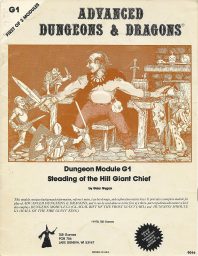 published eighteen stand-alone adventure modules carrying the byline of Gary Gygax, starting with Steading of the Hill Giant Chief in 1978. Because it was the first of its kind, module G1 does not include a suggested level range on its cover. Instead, there is an interior section, labeled “CAUTION,” that states the following:
published eighteen stand-alone adventure modules carrying the byline of Gary Gygax, starting with Steading of the Hill Giant Chief in 1978. Because it was the first of its kind, module G1 does not include a suggested level range on its cover. Instead, there is an interior section, labeled “CAUTION,” that states the following:
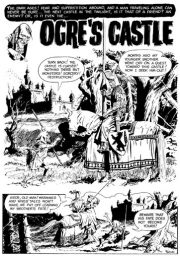 Comic Books (Dark Worlds Quarterly): Sword & Sorcery at Warren is a tale of a sub rosa movement within another genre. James Warren’s black & white magazines were an innovation that allowed comics creators to avoid the yoke of the Comics’ Code. That self-imposed doctrine had been necessary in 1954 to bring popular opinion in America back to comics as a harmless pastime. Warren had no desire to be harmless. These were comics for adults.
Comic Books (Dark Worlds Quarterly): Sword & Sorcery at Warren is a tale of a sub rosa movement within another genre. James Warren’s black & white magazines were an innovation that allowed comics creators to avoid the yoke of the Comics’ Code. That self-imposed doctrine had been necessary in 1954 to bring popular opinion in America back to comics as a harmless pastime. Warren had no desire to be harmless. These were comics for adults.
Comic Books (Dark Worlds Quarterly): Sword & Sorcery at Warren was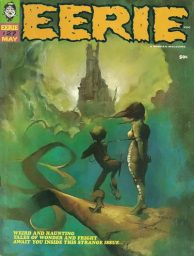 picking up steam. James Warren now had three magazines with the premiere of Vampirella. This makes it necessary to go to yearly (at least for now) sections. Bill Parente is still editor. He brought in more writers instead of doing it all himself. Famous names today: Gardner F. Fox, Nicola Cuti, and Buddy Saunders. He also welcomed artist/writers like Rich Buckler, Richard Corben and Dan Adkins. This attitude was unusual in the assembly line world of comics.
picking up steam. James Warren now had three magazines with the premiere of Vampirella. This makes it necessary to go to yearly (at least for now) sections. Bill Parente is still editor. He brought in more writers instead of doing it all himself. Famous names today: Gardner F. Fox, Nicola Cuti, and Buddy Saunders. He also welcomed artist/writers like Rich Buckler, Richard Corben and Dan Adkins. This attitude was unusual in the assembly line world of comics.
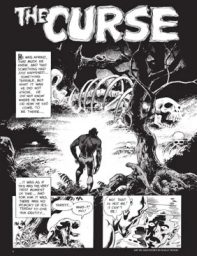 Comic Books (Dark Worlds Quarterly): Sword & Sorcery at Warren in 1971 saw a full ledger of S&S artists. Many of these wrote their own stories, including Wally Wood (who had been at this S&S thing elsewhere), Clif Jackson, Billy Graham, Pat Boyette, Dave Cockrum, Frank Brunner, along with other artists who drew only: Jaime Brocal, Jerry Grandenetti, Mike Ploog, Ernie Colon and Sam Glanzman. Many of these artists would draw the DC and Marvel stories that many think of as the first S&S comics.
Comic Books (Dark Worlds Quarterly): Sword & Sorcery at Warren in 1971 saw a full ledger of S&S artists. Many of these wrote their own stories, including Wally Wood (who had been at this S&S thing elsewhere), Clif Jackson, Billy Graham, Pat Boyette, Dave Cockrum, Frank Brunner, along with other artists who drew only: Jaime Brocal, Jerry Grandenetti, Mike Ploog, Ernie Colon and Sam Glanzman. Many of these artists would draw the DC and Marvel stories that many think of as the first S&S comics.
Fiction (Vintage Pop Fictions): Former CIA agent E. Howard Hunt became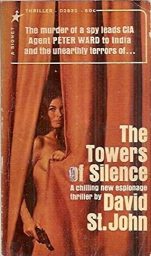 best-known (and most notorious) for his involvement in the Watergate scandal, for which he served nearly three years in prison. Hunt had been involved in many CIA covert operations, most of them probably illegal. He was therefore ideally qualified to write spy fiction and using the pseudonym David St. John he wrote the ten successful Peter Ward spy thrillers.
best-known (and most notorious) for his involvement in the Watergate scandal, for which he served nearly three years in prison. Hunt had been involved in many CIA covert operations, most of them probably illegal. He was therefore ideally qualified to write spy fiction and using the pseudonym David St. John he wrote the ten successful Peter Ward spy thrillers.
 Conan (Thread Reader): CONAN THE BARBARIAN is my go-to Christmas movie, and some new things really stood out to me at this year’s viewing. I want to talk about THIS moment and THIS guy.
Conan (Thread Reader): CONAN THE BARBARIAN is my go-to Christmas movie, and some new things really stood out to me at this year’s viewing. I want to talk about THIS moment and THIS guy.
This is the story of Red Hair. Red Hair isn’t much present — and that, quite different — in the latest script draft I can find, which is the John Milius third (this page links both it and the Oliver Stone first draft.
Fiction (Sprague de Camp Fan): Heinlein, Asimov, and de Camp traveled in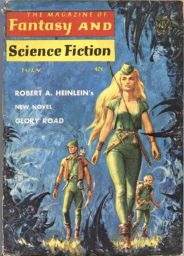 the same circles. All knew George Scithers, editor and publisher of the premiere REH/Conan fan magazine, Amra. According to author Darrell Schweitzer, “Heinlein wrote [Glory Road] when George Scithers suggested he couldn’t write Sword & Sorcery. It was more or less a dare.”
the same circles. All knew George Scithers, editor and publisher of the premiere REH/Conan fan magazine, Amra. According to author Darrell Schweitzer, “Heinlein wrote [Glory Road] when George Scithers suggested he couldn’t write Sword & Sorcery. It was more or less a dare.”
 Weapons (Spec-Ops Magazine): The AGS-17 is a Soviet-designed automatic grenade launcher that provides heavy infantry with fire support. It is designed to be used either on a stand or mounted on a vehicle. The launcher fires 30 mm grenades, making it effective against light and heavy targets.
Weapons (Spec-Ops Magazine): The AGS-17 is a Soviet-designed automatic grenade launcher that provides heavy infantry with fire support. It is designed to be used either on a stand or mounted on a vehicle. The launcher fires 30 mm grenades, making it effective against light and heavy targets.
Forthcoming (Cirsova): Two years have passed since the fall of Alness. And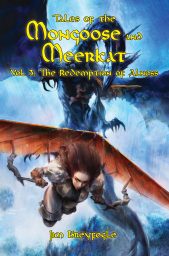 two years have passed since the brash young sellsword Mangos teamed up with Kat, the mysterious Alnessi rogue. Together, they have made a name for themselves as the Mongoose and Meerkat! The ravaged northlands still smolder as the warlord Rhygir holds Alness in an iron grip. Rumors swirl that a member of the Alnessi royal family may have survived, but Rhygir is intent on hunting down any resistance that might rally to a rogue prince who escaped the slaughter.
two years have passed since the brash young sellsword Mangos teamed up with Kat, the mysterious Alnessi rogue. Together, they have made a name for themselves as the Mongoose and Meerkat! The ravaged northlands still smolder as the warlord Rhygir holds Alness in an iron grip. Rumors swirl that a member of the Alnessi royal family may have survived, but Rhygir is intent on hunting down any resistance that might rally to a rogue prince who escaped the slaughter.
Writing (Pulprev): Times are changing, and we have to change with them. But to make the right moves, we have to learn from our missteps. This year, I published 4 books: the first 3 entries of Saga of the Swordbreaker, plus Diary of A Bomoh. The former exceeded my (admittedly modest) expectations; the latter was so new and so strange, I dared not set any expectations for it.
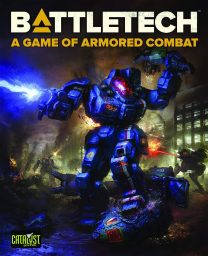 Games (Wert zone): Venerable SF miniatures title BattleTech has reasserted its position as one of the most popular tabletop wargames around. Catalyst Game Studios have confirmed they have shipped over 9 million miniatures since relaunching the line back in 2015, most of that since they revamped the two core game box sets in 2018.
Games (Wert zone): Venerable SF miniatures title BattleTech has reasserted its position as one of the most popular tabletop wargames around. Catalyst Game Studios have confirmed they have shipped over 9 million miniatures since relaunching the line back in 2015, most of that since they revamped the two core game box sets in 2018.
Science Fiction (Isegoria): With the Avatar sequel coming to theaters, I was reminded of Poul Anderson’s 1957 story, Call Me Joe, which inspired the avatar element of James Cameron’s movie. The story opens like this: The wind came whipping out of eastern darkness, driving a lash of ammonia dust before it. In minutes, Edward Anglesey was blinded.
Review (DMR Books): Swords and Sorceries: Tales of Heroic Fantasy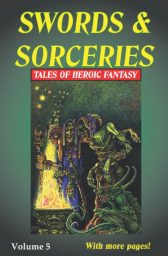 Volume Five, Edited by David A. Riley Parallel Universe Publications November 2022. This year winds down with another remarkable collection. Riley opens the anthology with an introduction that has me adding numerous titles to my already unwieldy TBR pile. Many of the authors have appeared in previous installments of this series, but a handful are new. Take a gander at this stellar line up.
Volume Five, Edited by David A. Riley Parallel Universe Publications November 2022. This year winds down with another remarkable collection. Riley opens the anthology with an introduction that has me adding numerous titles to my already unwieldy TBR pile. Many of the authors have appeared in previous installments of this series, but a handful are new. Take a gander at this stellar line up.
Culture (Isegoria): C.S. Lewis is perhaps best known for The Chronicles of Narnia and then for Mere Christianity, but he’s also known for works like The Inner Ring, Dangers of National Repentance, The Necessity of Chivalry, Equality, On the Reading of Old Books, and The Great Divorce. I’d been meaning to read his essay on Men without Chests, which opens The Abolition of Man, and, like Brett McKay, I had assumed it meant men without spines, or courage, or manly virtues, which isn’t quite right:
Writing (Steven Pressfield): Last week we talked about our passage “through the wilderness” being imbued with meaning, i.e. not random, not absurd, not shameful, not meaningless. Let’s dive into this a little deeper. In Turning Pro, I wrote about “shadow careers.”
Games (Bull Hansen): Some time ago, I was approached by Alga Spel. They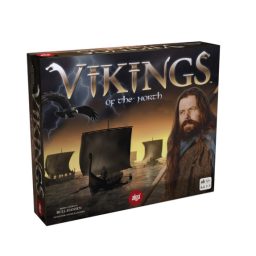 wanted to make a strategy board game based on Viking Age sea battle and conquest. I liked the idea and said yes. Now, a few months later, I can tell you I did not regret that decision. I have had the pleasure of working with some very talented people as a consultant on the authenticity part, and I must say I am impressed with the result. To be honest, I never really like board games much, but this one really fascinates me and we can sit for hours playing.
wanted to make a strategy board game based on Viking Age sea battle and conquest. I liked the idea and said yes. Now, a few months later, I can tell you I did not regret that decision. I have had the pleasure of working with some very talented people as a consultant on the authenticity part, and I must say I am impressed with the result. To be honest, I never really like board games much, but this one really fascinates me and we can sit for hours playing.
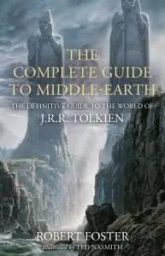 Tolkien (Grim Dark Magazine): The Complete Guide to Middle-earth updates earlier editions with a few more wonderful illustrations from Ted Nasmith and a stunning new cover that brings it in line with some of the latest versions of Tolkien’s works. It is a peerless guide that brings together names, places, and some of the major moments in Tolkien’s world as read in The Lord of the Rings, The Hobbit, and The Silmarillion.
Tolkien (Grim Dark Magazine): The Complete Guide to Middle-earth updates earlier editions with a few more wonderful illustrations from Ted Nasmith and a stunning new cover that brings it in line with some of the latest versions of Tolkien’s works. It is a peerless guide that brings together names, places, and some of the major moments in Tolkien’s world as read in The Lord of the Rings, The Hobbit, and The Silmarillion.
Tolkien (John C. Wright): Each week, Jason Rennie and John C Wright explore the peaks of insanity which dominate the modern age, and how to overcome them. We discuss philosophy, science fiction, the true, the good, the beautiful, and whatever else strikes our fancy. Episode 05: C.L. Lewis, J.R.R. Tolkien, and What They Did Right,
Cinema (Neotext Corp): Asked by Debbie Lynn Elias of Behind The Lens Online on what compels the director Peter Weir to film such varied stories as he does, leading up to Master And Commander: The Far Side of the World, the director ruminated and replied. “It’s like many things. It’s your childhood, the way you grew and where you grew up. I live at the bottom of the world in Australia. Television didn’t come in until I was 12.
Online on what compels the director Peter Weir to film such varied stories as he does, leading up to Master And Commander: The Far Side of the World, the director ruminated and replied. “It’s like many things. It’s your childhood, the way you grew and where you grew up. I live at the bottom of the world in Australia. Television didn’t come in until I was 12.
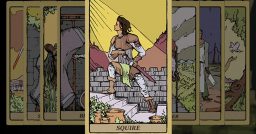 Interview (Grim Dark Magazine): I bring you a first for Grimdark Magazine: game developer interviews! Today, I bring an interview with game developer Jake Donkersgoed, creator of indie RPG The Doors of Trithius, an RPG roguelike set in a randomly generated fantasy world. You fight monsters, avoid traps, collect loot, manage your wounds and more as you traverse the mysterious world of Enalia. Jake was awesome enough to shoot me over a code of the game (which I’ll be reviewing in the coming weeks), but for now, let’s dive in with Jake and chat about The Doors of Trithius, being a games developer, and dealing with the market response to your work.
Interview (Grim Dark Magazine): I bring you a first for Grimdark Magazine: game developer interviews! Today, I bring an interview with game developer Jake Donkersgoed, creator of indie RPG The Doors of Trithius, an RPG roguelike set in a randomly generated fantasy world. You fight monsters, avoid traps, collect loot, manage your wounds and more as you traverse the mysterious world of Enalia. Jake was awesome enough to shoot me over a code of the game (which I’ll be reviewing in the coming weeks), but for now, let’s dive in with Jake and chat about The Doors of Trithius, being a games developer, and dealing with the market response to your work.
Games (Jon Mollison): Two very important take home lessons followed my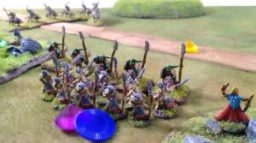 first game of OPR: Skirmish. For one, an all-mounted goblin force makes for an army list that’s all hammer, no anvil. For another, in a game like OPR: Skirmish you have to be careful how you use all that speed.
first game of OPR: Skirmish. For one, an all-mounted goblin force makes for an army list that’s all hammer, no anvil. For another, in a game like OPR: Skirmish you have to be careful how you use all that speed.
We should talk victory conditions first. The standard game uses objective markers – whoever has figures standing on the most at the end of four turns wins the game.
 Horror (Chimney Sweep Reader): Robert McCammon has always provided me with great entertainment and this time around was no exception. This is primarily a World War II spy novel wherein Michael Gallatin is on a mission to support the allied D-Day invasion by preventing a Nazi gas warfare scheme. It’s a clever plot filled with adrenaline-charged action at every turn. On its own, it would be a very nice thriller but the fact that Michael is also a werewolf makes this one a keeper.
Horror (Chimney Sweep Reader): Robert McCammon has always provided me with great entertainment and this time around was no exception. This is primarily a World War II spy novel wherein Michael Gallatin is on a mission to support the allied D-Day invasion by preventing a Nazi gas warfare scheme. It’s a clever plot filled with adrenaline-charged action at every turn. On its own, it would be a very nice thriller but the fact that Michael is also a werewolf makes this one a keeper.
Robert E. Howard (Goodman Games): Robert E. Howard was a pulp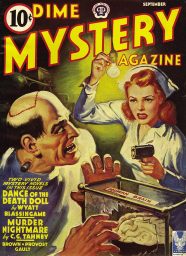 professional, always searching for new markets to sell his fiction. Unlike his friends in the Weird Tales bullpen, H. P. Lovecraft and Clark Ashton Smith, both of whom kept to a narrow fictional style and a handful of magazines, Howard experimented to target different markets. Sometimes the experiments were a bust. He sold a few straightforward detective yarns to low-paying pulps before abandoning the genre (“I can scarcely endure to read one, much less write one”). Other times he scored huge successes, such as his Appalachian Western-comedies for Action Stories.
professional, always searching for new markets to sell his fiction. Unlike his friends in the Weird Tales bullpen, H. P. Lovecraft and Clark Ashton Smith, both of whom kept to a narrow fictional style and a handful of magazines, Howard experimented to target different markets. Sometimes the experiments were a bust. He sold a few straightforward detective yarns to low-paying pulps before abandoning the genre (“I can scarcely endure to read one, much less write one”). Other times he scored huge successes, such as his Appalachian Western-comedies for Action Stories.
Please give us your valuable comment